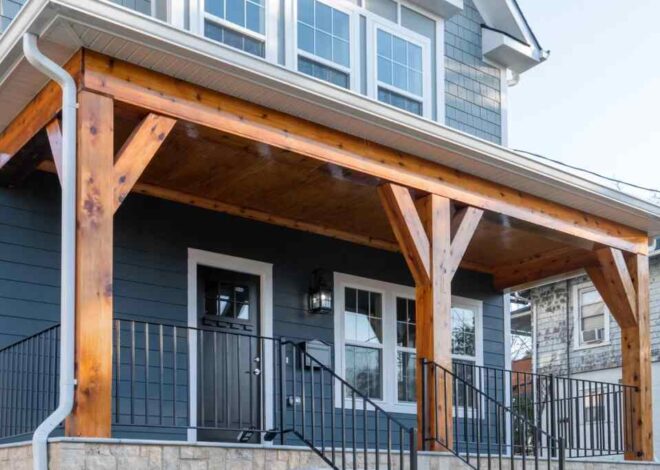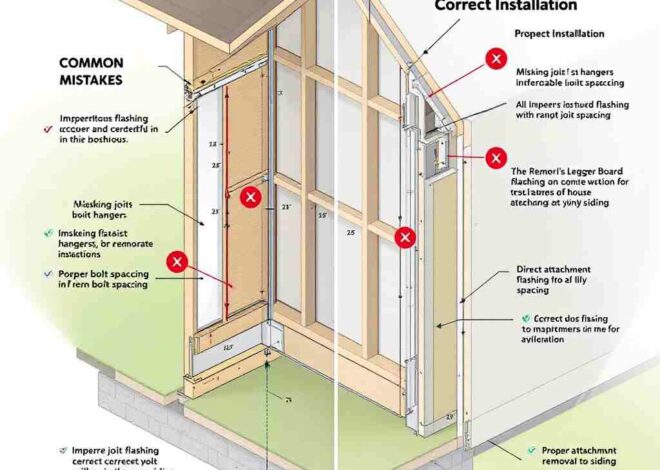
Transform Your Outdoor Space: A Step-by-Step Guide on How to Attach a Patio Roof to a House with Vinyl Siding
What is a Patio Roof and What is it for: Curvature of patio roof that extends over your outdoor space, protecting it from rain, sun and wind, which makes your outdoor area more usable and comfortable.
Vinyl Siding Compatibility: If your home has vinyl siding, it’s important to choose a patio roof that is compatible with it to avoid potential damage.
Attach a patio roof to a house with vinyl siding.

The Importance of a Properly Planned Installation
Preventing Mistakes Common to Laying Tile: With sufficient planning, you can prevent structural damage or water damage due to improper installation of tile.
Pleasurable Outdoor Living Experience: The outdoor space at our home becomes so much more functional when one has a well-installed patio roof, which enhances your pleasurable outdoor living experience.
Advantages of Installing a Roof Over a Patio

Improving the Functionality of Outdoor Living Areas
Weather Protection: The biggest advantage of a patio roof is that it provides shelter from the elements, also allowing you to use your outdoor space at any time.
An aesthetic appeal: Additionally, it greatly contributes to the beauty of your home and goes well with your existing architecture.
Improved Property Value — Adding a patio roof will expand the usable outdoor space, thereby enhancing the overall value of your property.
You may also read (step by step guide attaching a patio roof to a two story home)
Functional Benefits
Year-Round: You will likely notice a shift in how often your patio is utilized as players enjoy it year-round with no interruptions due to weather, thanks to a roof.
Entertainment and Relaxation: It also serves as a great space for outdoor dining, parties or just a quiet moment.
Preparation and Planning
Gather Necessary Tools and Materials
Tools Needed: Measuring tape, pencil, level, power drill, drill bit, ladder, screws, vinyl siding hooks, pressure-treated lumber, rafter brackets, patio roof sheets, roofing nails, flashing, caulk, and weatherproofing materials.
Selecting Suitable Materials: The quality of the materials you use, especially their durability and exposure to the outdoors, also affects the lifespan of your patio roof — so choose wisely.
Measure and Design the Patio Roof

Precision Measurements: Getting the precise measurements for a patio involves precision to ensure that the patio roof would fit accurately as per the house dimensions.
Materials – think about what materials you want based on what will look good on your home and what you need Metal, polycarbonate or fiberglass, with various looks and durability.
A Comprehensive Guide to Install Python on Windows
Clean the vinyl siding
Examine the Vinyl Siding: Confirm that there is no damage to the vinyl siding where you will be attaching the roof. If needed, replace any compromised sections to restore the integrity of the siding.
Removing Furniture: Take out any furniture, plants, or decor to allow space to work.
Identify Where to Attach: Use a pencil to mark where they’ll be attaching structural supports such as the ledger board and rafters.
Remove the siding panels — Temporarily remove the vinyl siding panels so you can access the structural supports of the house where the roof will be attached.
Install a J-Channel
The Purpose of the J-Channel: J-channel plays an important part in keeping the water diverted away from the house and in stabilizing the ends of the roof panels.
Installation Method: The J-channel must be attached around the perimeter of the area where the roof will connect, providing a close and tight fit for the roof panels.
Mark Points on the House Where You Want the Attachments
Finding Ledger Board Point: Mark where you will mount your ledger board according to your roof’s design plans.
Marking Out with a Level: Using a level will enable you to ensure your markings are perfectly horizontal, which is crucial to provide a solid base for your roof.
Install Ledger Board
Screw into the house: To anchor the ledger directly to what’s behind it, either the house’s framing or sheathing, use screws strong enough to support the roof’s weight.
Ensure Stability: Make sure the ledger board is level and properly secured.
Attach Rafters to Ledger Board
- Rafters — Set rafters at even spacing according to your roof design specifications so weight is evenly distributed and the structure is sound.
- Attach the rafters with brackets or hangers designed for heavy loads, making sure they are fastened securely to the ledger board.
Install Roof Panels
Choosing the Right Panels: Pick panels that match up with your home’s design and offer the appropriate amount of durability and insulation.
Be sure to fasten panels to your rafters tightly so there are no leaks and no strong wind damage.
Seal and Weatherproof
Significance of Sealing: Adequate sealing is vital to stop moisture from entering and to shield your patio roof and your home’s interior.
Materials Required: Good caulk, flashing, weatherproofing materials for sealing all joints, where the roof meets the house
Application Process: Apply these materials thoroughly, focusing on ensuring a watertight seal, especially on areas that might be prone to water accumulation.
Challenges faced and solutions sourced
Structural Integrity Concerns
- Proper Support: Make sure your patio roof has good support, especially at the ledger board and rafter connections.
- Additions for Weak Points: If you spot weak points in your roof, use extra brackets of supports to brace these so that the roof weight is held firmly.
Water Damage Prevention
- Flashing & Sealing: Flashing is your first defense against water entering your home — just like how a rubber seal on a door keeps water on the outside.
- Routine Checks: Inspect the mentioned areas frequently for any blemishes or tear and mend them immediately ensure seal remains intact.
Vinyl Siding Damage
- Installation Prevention: Be careful when installing not to crack or break the vinyl siding. Only use tools and techniques particularly prescribed for vinyl.
- Maintenance: Clean the siding at least once a year using a vinyl siding cleaner and a soft brush to maintain the color and shine of the siding just like new.|Damage Repair|If damage occurs, individual panels can be easily replaced for a completely new look and effectiveness of home exterior.
Maintenance and Upkeep
Regular Inspections
- Assessing Damage: Periodically examine the patio roof and the vinyl siding for any indication of damage or wear. Check for loose panels, leaks or any signs of mold or rot.
- Proactive Solutions: Problems like these can later lead to bigger issues, so preventative steps early on save you time and trouble in the long run, giving your patio roof a longer lifespan and your home a safer wall.
Cleaning and Repairs
Cleaning Methods: Regularly clean the roof and remove debris and dirt that can cause damage over time. Always use gentle cleaning solutions and avoid using fertilizers that could damage the roofing material.
Fix Damaged Areas: If you do find damage, get in touch with a professional or look at repair guides that relate directly to the material your patio roof and vinyl siding are made from.
Conclusion
Recap of Key Points
We went through everything from the initial preparation and planning phase, to the step-by-step directions for installing each part of the patio roof.
Why is correct installation important: Adhering to these specifications will result in building a durable, functional and attractive patio roof that will increase your home’s appeal and your quality of life.
You may also read (what are some ways to make a flat roof more attractive)


